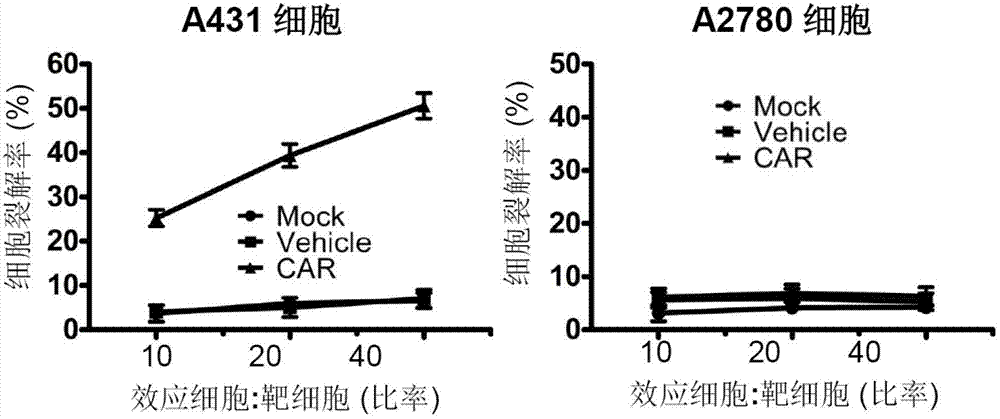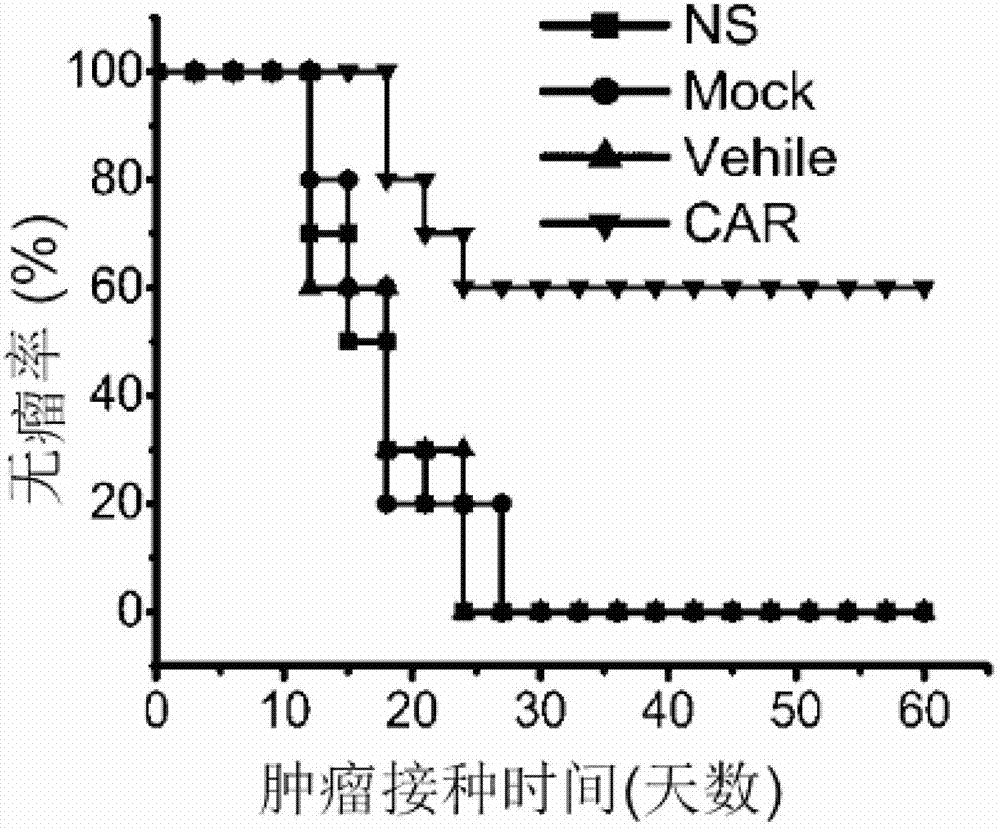Genetically engineered lymphocyte targeting Human EGFR (Epidermal Growth Factor Receptor), preparation method and application of genetically engineered lymphocyte
A technology of targeting and host cells, applied in the field of lymphocytes, can solve the problem of not using lymphocytes to treat tumors, etc.
- Summary
- Abstract
- Description
- Claims
- Application Information
AI Technical Summary
Problems solved by technology
Method used
Image
Examples
Embodiment 1
[0032] Example 1: Obtaining the full-length gene of EGFR targeting CAR and construction of expression plasmid vector
[0033] 1 experimental route
[0034] The CAR gene is composed of SP hIL-2, scFv that recognizes EGFR, IgG2-Fc, and CD28TM-CD3ζ. The SP hIL-2 sequence is included in the upstream amplification primer through primer synthesis; the EGFR targeting scFv sequence is amplified from anti-EGFR hybridoma cells, that is, optimized by ribosome display technology. The specific steps are as follows: Preparation of anti-EGFR hybrid Tumor cells, extract total RNA, and then use RT-PCR to amplify the heavy and light chain genes against EGFR, and send them to Invitrogen for sequencing. The sequencing results were analyzed by Jellyfish software, and the sequences that could be correctly translated were compared through VBASE2 and GeneBank, and their specificity and affinity were evolved by ribosome display technology. The resulting anti-EGFR single-chain antibody with high affinity ...
Embodiment 2
[0084] Example 2 Transfection and expression detection of lymphocytes
[0085] 1 experimental route
[0086] 1) Culture of lymphocytes
[0087] (1) Lymphocytes were separated from the peripheral blood of five voluntary blood donors by density gradient centrifugation: Inactivated human plasma and rhIL-2 were added to X-VIVO15 medium (Lonza, Item No. 04-744Q) ( Shandong Quangang Pharmaceutical, Quanqi, 2 million IU / branch) to a final concentration of 3% and 300 IU / mL, as a conventional medium for lymphocytes.
[0088] (2) Activation and expansion of lymphocytes: Add mouse anti-human CD3 and CD28 antibodies (BDBioscience, CD3 antibody product number: 555337, CD28 antibody product number: 55725) to the lymphocyte culture medium to a final concentration of 1μg / mL. Dilute the separated lymphocytes with this medium to make the cell density 3×10 6 . 37℃,5%CO 2 to cultivate. After 72h, change the medium to a regular medium for lymphocytes.
[0089] 2) Transfection of lymphocytes
[0090] (1) ...
Embodiment 3
[0105] Example 3 Detection of in vitro killing activity of CAR gene modified lymphocytes
[0106] This experiment uses a cytotoxicity detection kit (Promega CytoTox Non-Radioactive Cytotoxicity Assay Kit, catalog number G1780) for the detection of the in vitro killing activity of CAR genetically modified lymphocytes.
[0107] 1 experimental route
[0108] 1) Collect lymphocytes and human epidermal squamous cell line A431 and human ovarian cancer cell line A2780 after 16 hours of transfection, and count the cells;
[0109] 2) Add 4000 tumor cells in a 96-well plate as target cells; add effector cells in the target cell wells at the ratio of effector cells: target cells of 10, 20 and 40. Make 3 auxiliary holes for each group; set aside 3 holes for target cells and effector cells in each group to detect the release of spontaneous lactate dehydrogenase (LDH); centrifuge at 250G, 4min; 37℃, 5% CO 2 Incubate for 6h in the incubator;
[0110] 3) Add Lysis Solution to the target cell wells of...
PUM
| Property | Measurement | Unit |
|---|---|---|
| volume | aaaaa | aaaaa |
Abstract
Description
Claims
Application Information
 Login to View More
Login to View More - R&D
- Intellectual Property
- Life Sciences
- Materials
- Tech Scout
- Unparalleled Data Quality
- Higher Quality Content
- 60% Fewer Hallucinations
Browse by: Latest US Patents, China's latest patents, Technical Efficacy Thesaurus, Application Domain, Technology Topic, Popular Technical Reports.
© 2025 PatSnap. All rights reserved.Legal|Privacy policy|Modern Slavery Act Transparency Statement|Sitemap|About US| Contact US: help@patsnap.com



